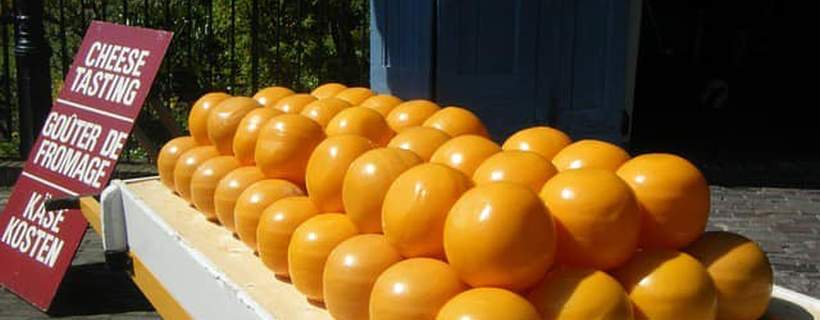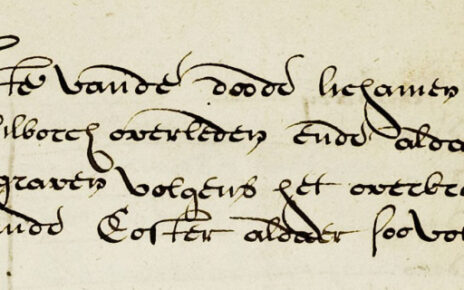In the first week of September, I had the privilige to guide a group of Americans who signed up for the Netherlands Trip of the New York Genealogical and Biographical Society (NYG&B). All participants are descendants of 17th century Dutch immigrants. What did we do?
Leiden
On the first day we visited Leiden. In the morning we had a guided tour through the Academia Building, the oldest part of Leiden University. This university is the first and therefore oldest university of the Netherlands. It started in 1575! The botanical gardens once started as part of the university. We visited a reconstruction of the first garden, roughly from the early 1600s. Next we walked around the Pieterskerk, which mentions the wives and children of Pilgrims who died in Leiden. The Pilgrims lived in Leiden for aboout 12 years, before they departed to New England (now part of the United States).
In the afternoon we visited Erfgoed Leiden en Omstreken, the regional archives. Here we heard more about the Pilgrims and we saw original documents regarding these early immigrants. Highlight of this session: two sisters found their ancestor’s marriage.
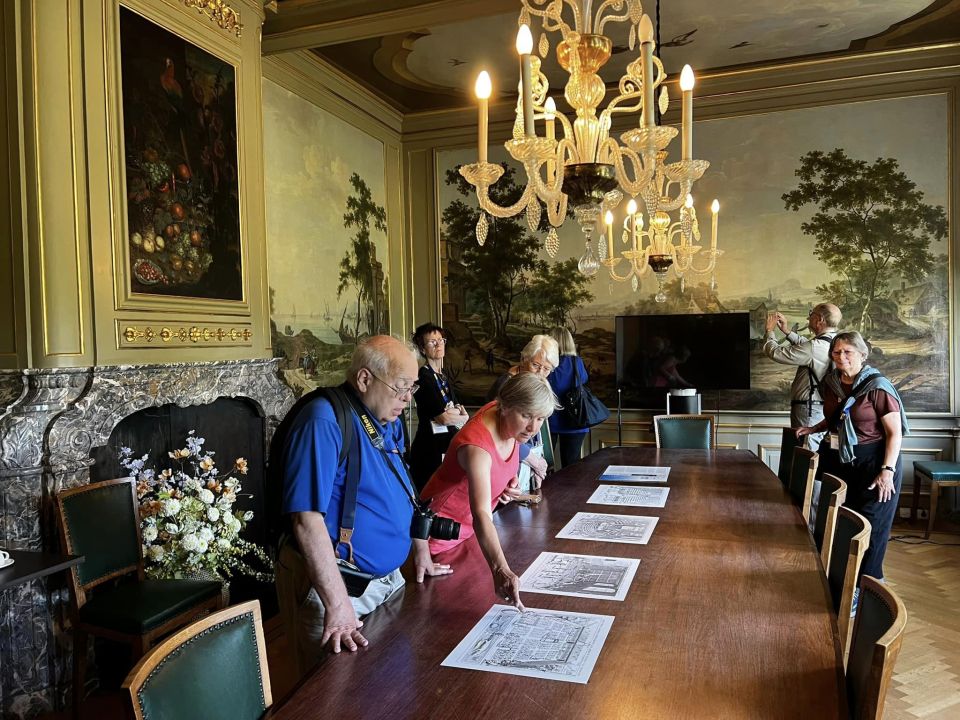
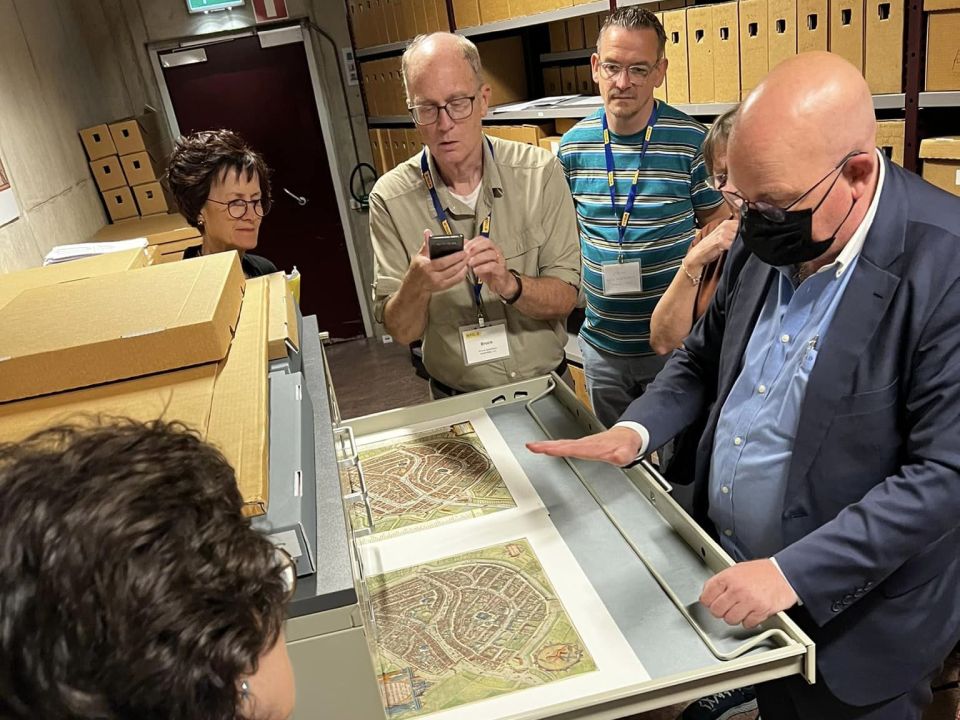
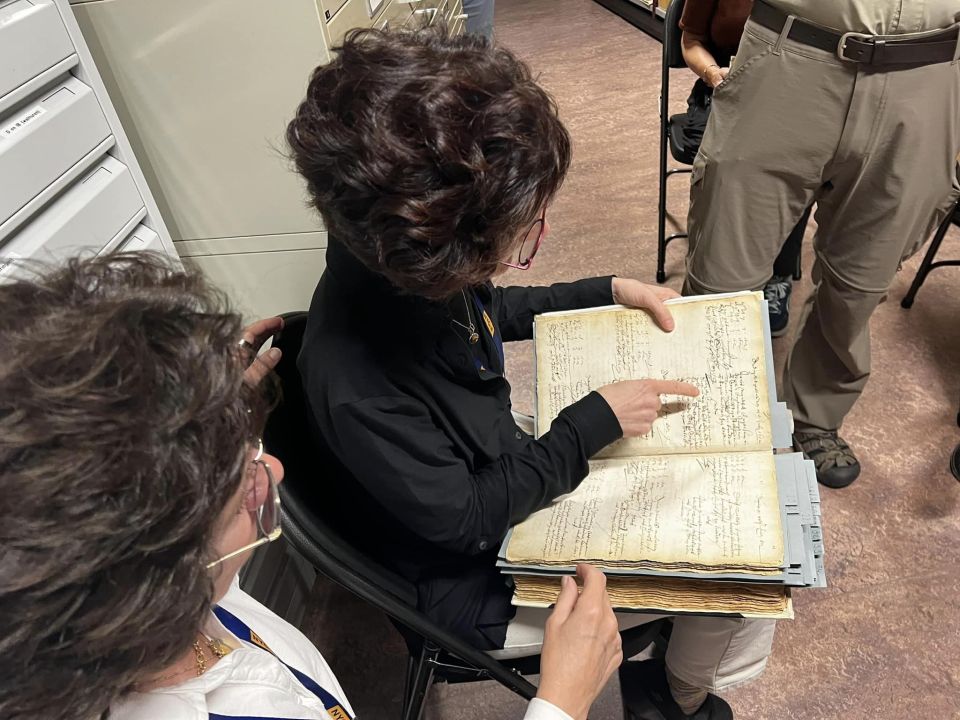
Arnhem
The second day of the trip was only about the Open Air Museum in Arnhem. Here the participants could get acquainted with the various living styles in the Netherlands in the last three centuries. A good way to find out how our ancestors lived and worked. A guide showed us old farm houses, and explained how people dug peat which they used as their main fuel. She also told us about cheese making, about the tools farmers used. This was very much appreciated by the participants, who now really got an idea of the lives of “common people” in the past.
I also treated some of them to ‘poffertjes’, small puffed pancakes served with butter and powdered sugar!
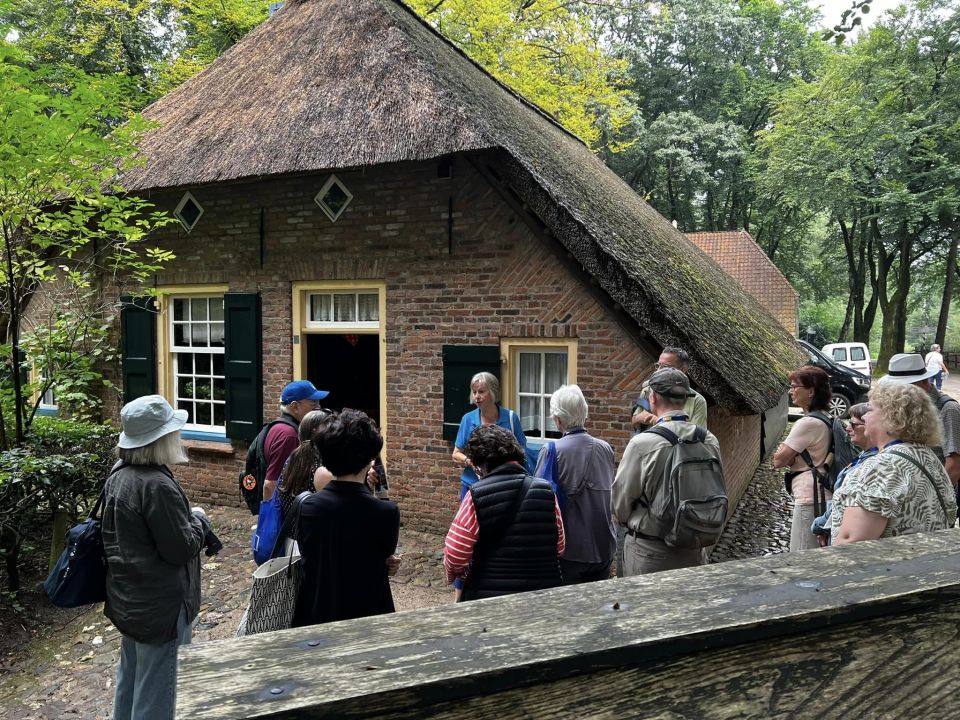
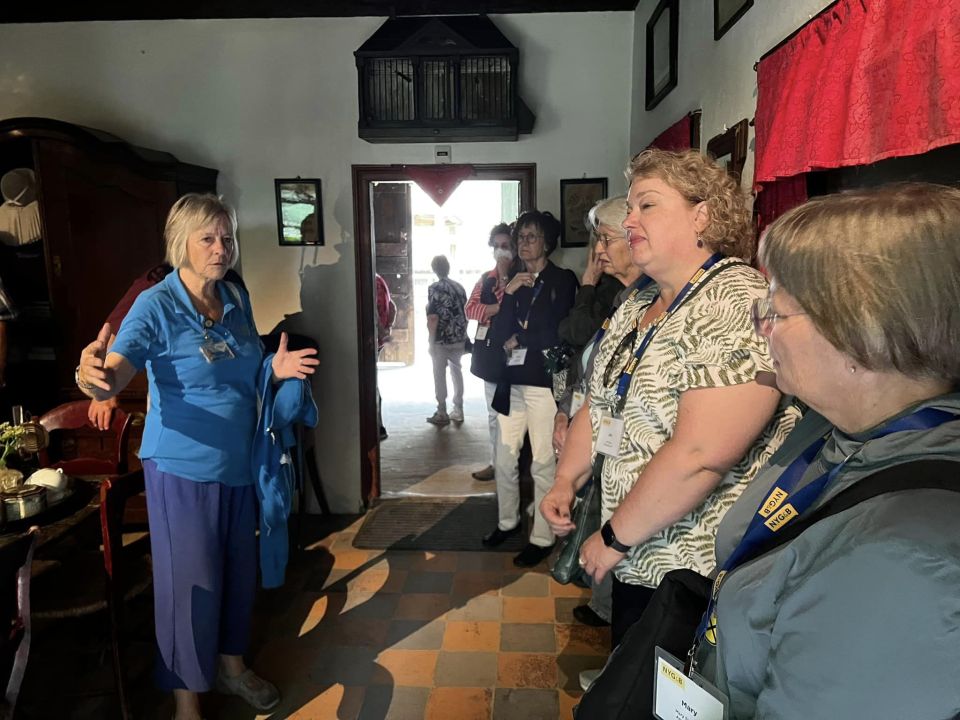
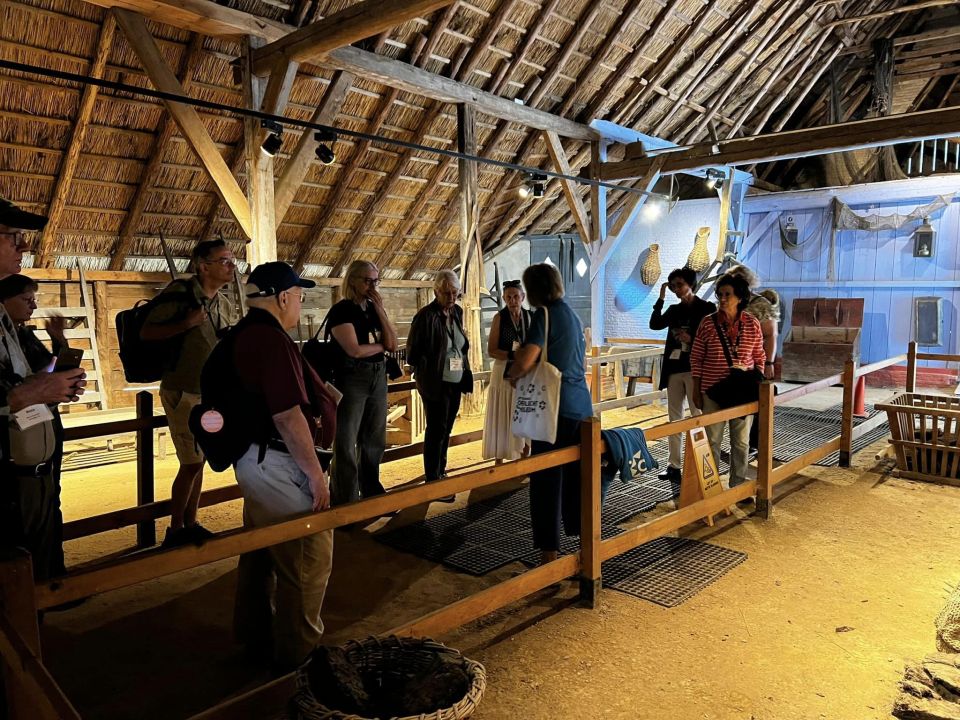
Delft
The theme of day three was: politics and faith in the 17th century. We visited Delft where we learned about the Eighty Years’ War, and about art and science of that time. In the morning we started with a guided tour of the Prinsenhof Museum. This old convent became the resident of William of Orange, or William the Silent. He was the leader of the uprising of the Netherlands against the king of Spain. This started a war, which lasted from 1568 to 1648. This tour also showed magnificent paintings by Dutch masters. My highlight: Prinsenhof has a painting on display, made by my ancestor Gerard Houckgeest.
Later that day, we visited the Nieuwe Kerk (New Church) where we saw the grave of William of Orange. This is also the church where almost all members of the Dutch royal family were buried. The participants could even sit on the Royal benches!
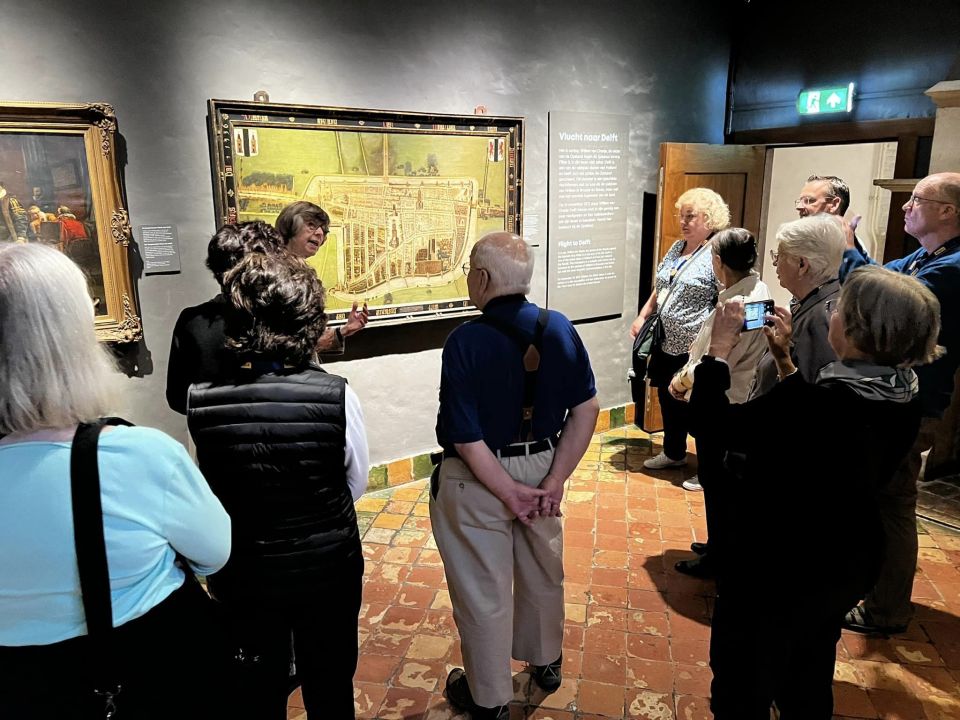
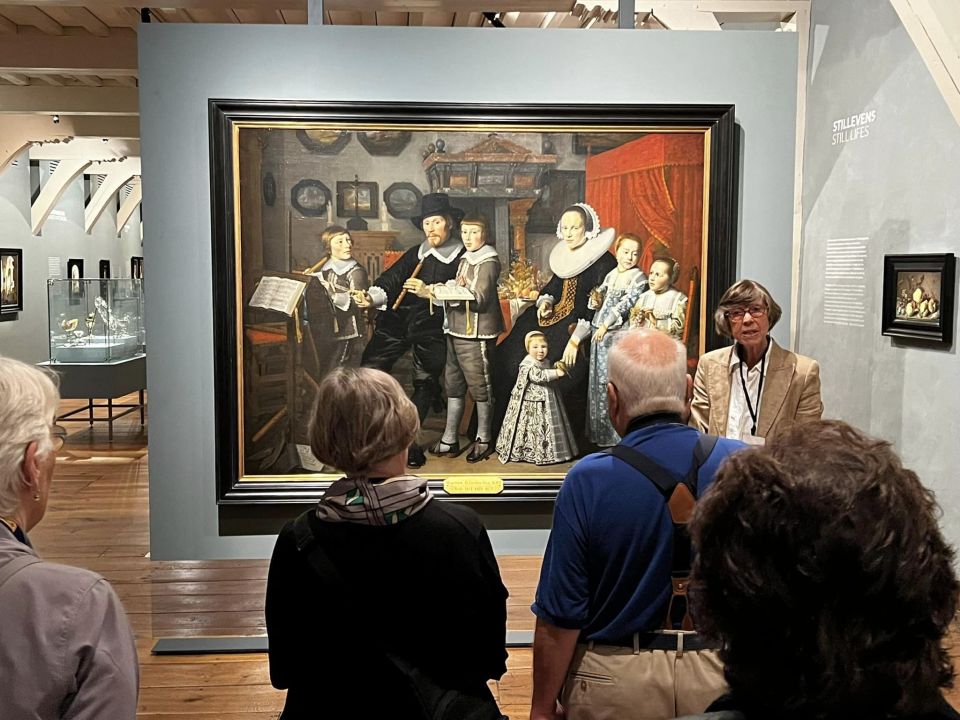
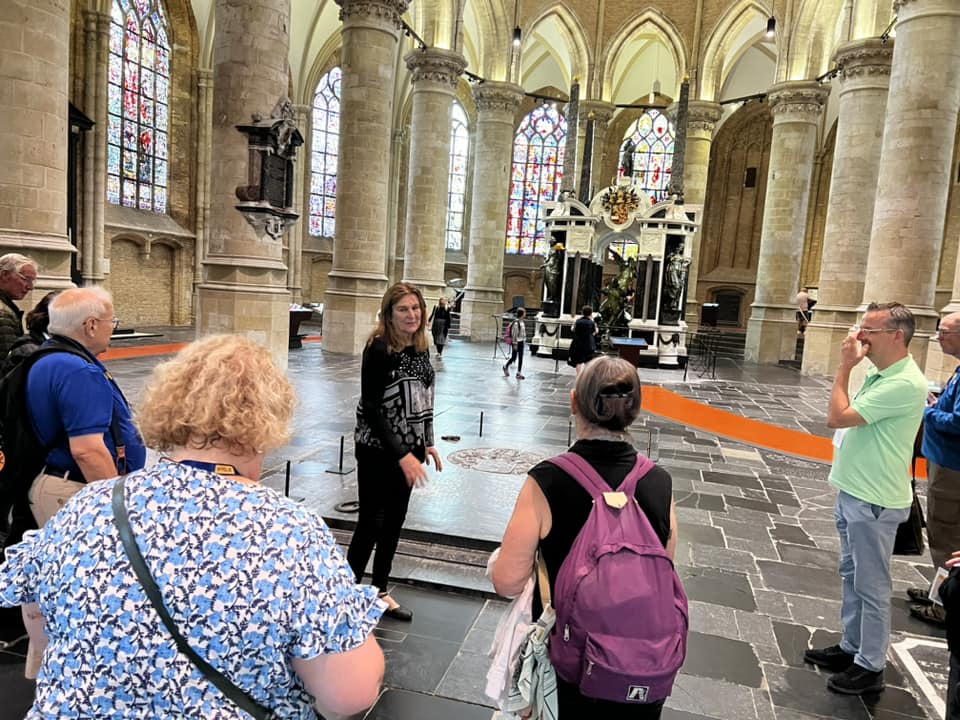
Oudewater and Gouda
During our visit to Oudewater we heard in Heksenwaag about the weighing of witches. This was the only place in Europe where women and men (!) had the opportunity to prove their innocence. If the certified weigh master came to the conclusion that the weight was in line with what would be expected of someone of a certain build, the person would get a certificate stating that he or she was not a witch. That little piece of paper would literally save someon’s life! Highlight for one of the participants: her ancestors lived in Oudewater, which means she literally walking into her ancestors’ footsteps!
In Gouda we learned more about cheese and – of course – we had a mini cheese tasting. One piece of young Gouda cheese (3 months), one piece of goat cheese and one piece of old cheece (3 years).
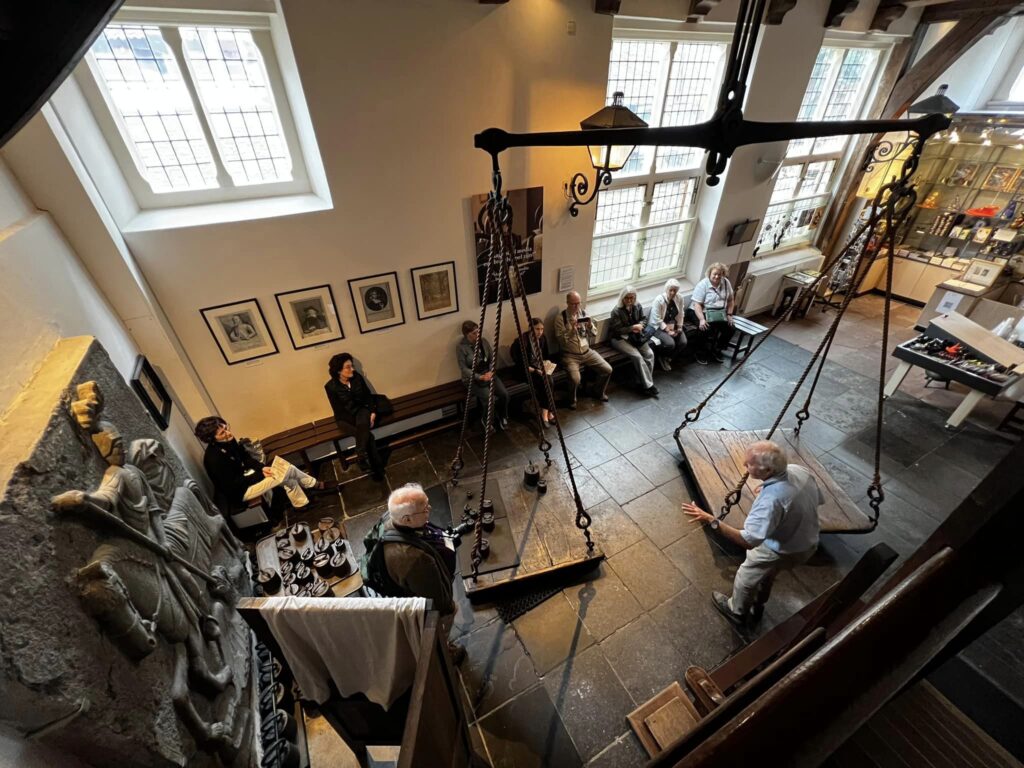
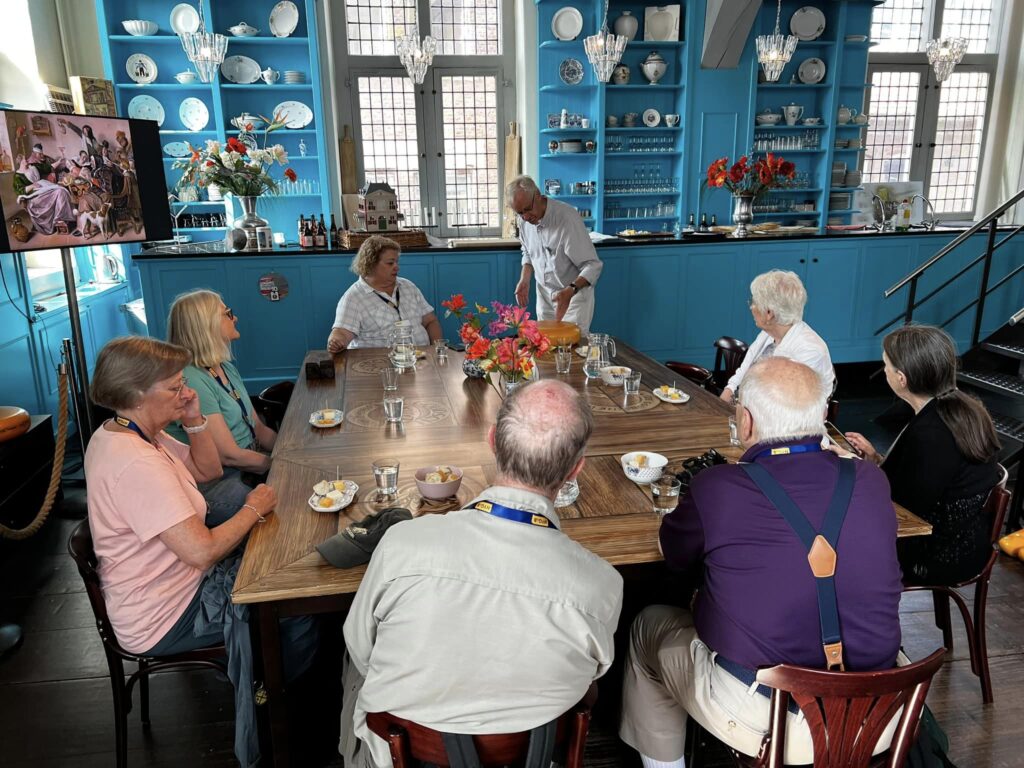
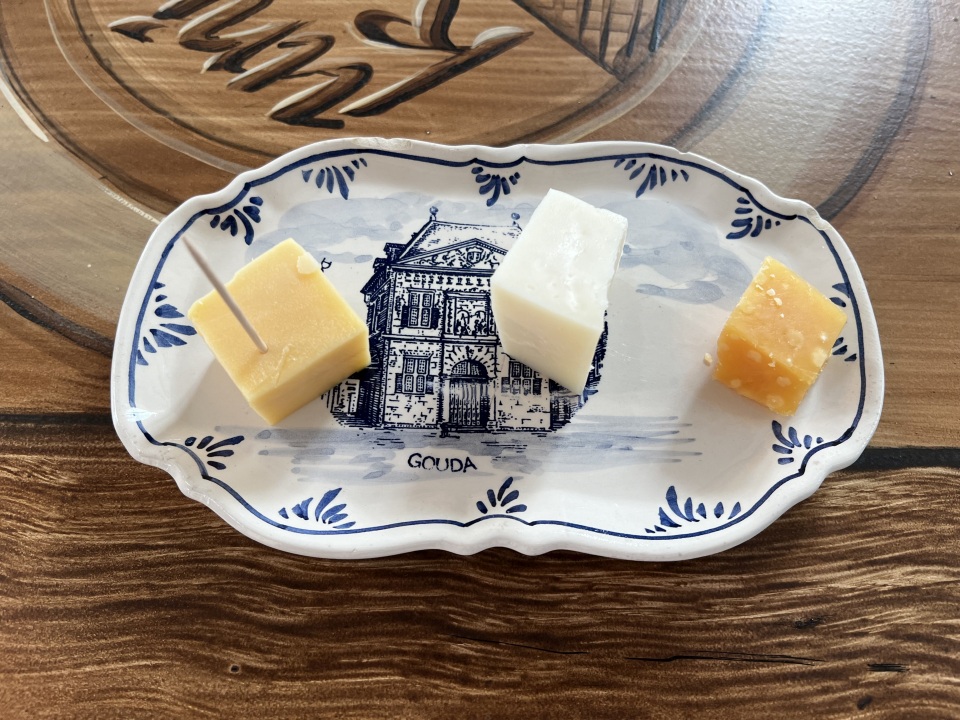
Amsterdam
On the 5th and final day of the trip we were in Amsterdam. In the morning we visited the City Archives, where we looked at documents that are important to New Netherland and walked through the depot. A senior archivist showed us for example a list of orphan children who voluntarily signed up for a voyage to the other side of the ocean. He also showed records from the Holland Land Company, that can be of interest for everyone who had ancestors in upstate New York.
In the afternoon we visited the house where the famous Dutch painter Rembrandt lived and worked for 19 years. It gives a good picture of how someone of his standing lived in Amsterdam in the 17th century. We did hear from the guide that he actually lived far above his station: he had constant financial worries.
We ended the day and the trip with a meal. It became clear that all participants enjoyed the trip and that they also appreciated my knowledge!
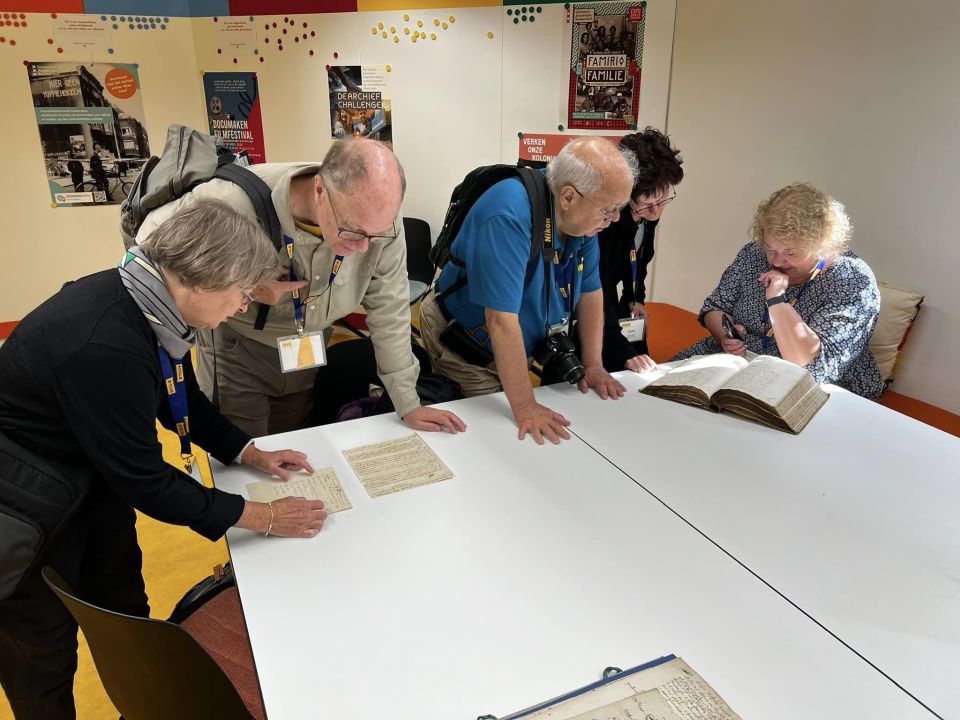
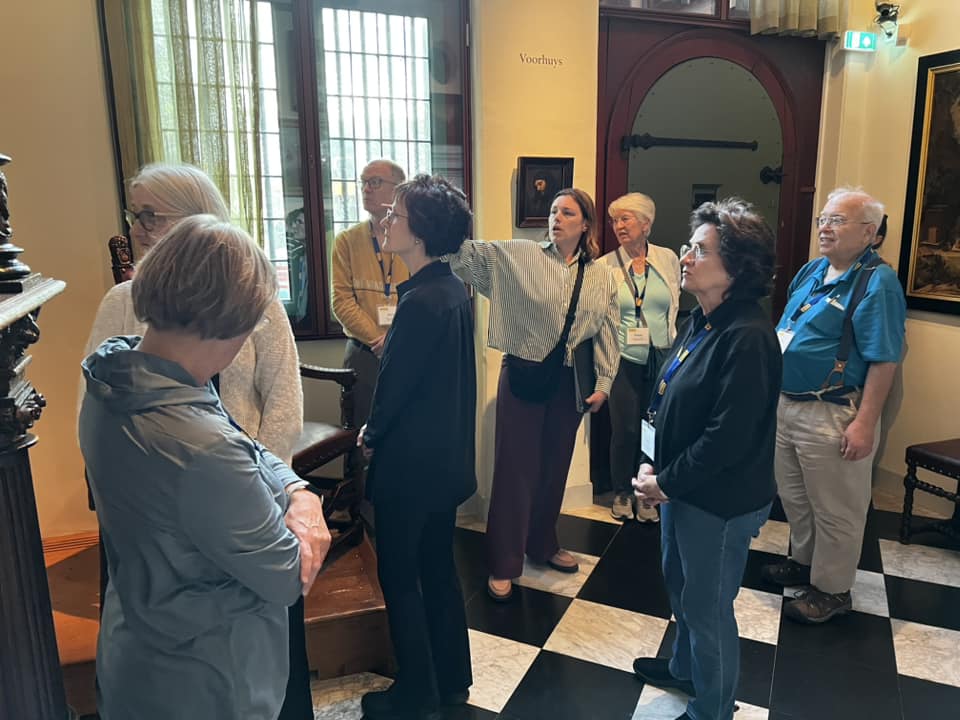
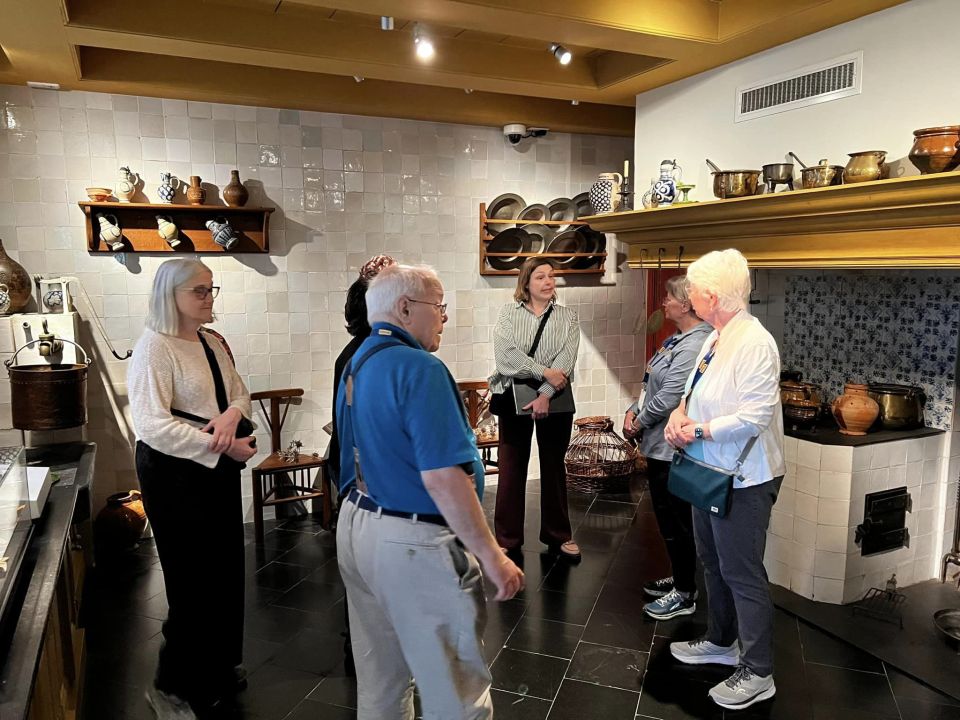
NYG&B
If you are also interested in a similar trip, it is wise to keep an eye on the messages from NYG&B. They are thinking of coming to the Netherlands again in two years, so in 2026. Maybe I will see you then?!
You can find more about this association on their website: New York Genealogical and Biographical Society.

